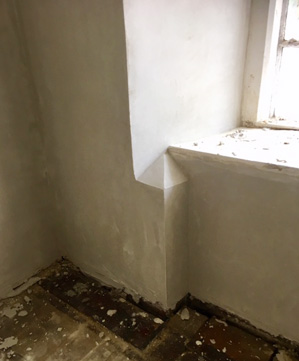

Gypsum plaster is the most common form of plaster for interior walls, and also has good fire-resistant qualities. Gypsum plaster is viewed by many people in the conservation world as a modern material which is inappropriate for use in historic buildings, yet it has been used in this country for hundreds of years.
Plasterers often use gypsum to simulate the appearance of surfaces of wood, stone, or metal. Gypsum plaster draws moisture out of walls (and from humid air) and then dissolves – but there is scarcely a Victorian house in the country on which they have not been used - often as part of so-called "damp-proofing" work.
Some of the advantages of gypsum plaster are: Ease of Application - Gypsum can be directly applied over brick/block work without separate finishing. It is also very easy to apply and level gypsum plaster. Gypsum reaction produces less heat as compared to cement reaction with water, and there is less chance of any shrinkage cracking.
